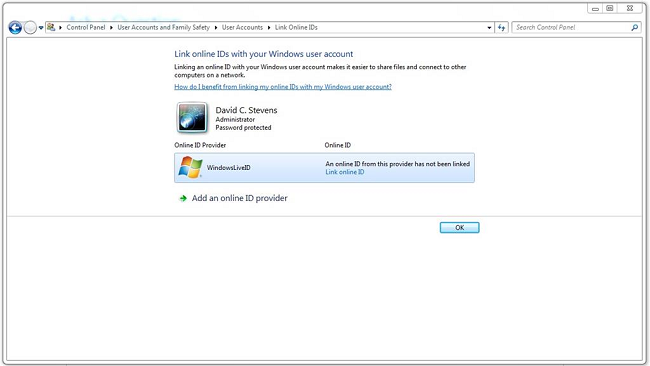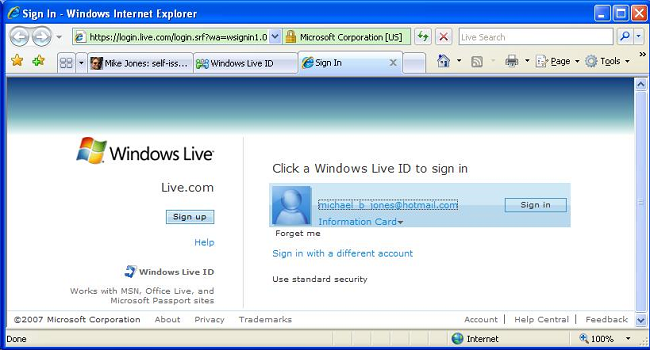Live ID Windows Crack Authentication Is Secure And Free
Creating a Live ID Windows Crack Personalized Application 2024
Live ID Windows now offers third parties an easy way to obtain its authentication in your web or extended client applications, allowing you to reach millions of Live ID users, integrate with Live Controls, and access live services. Moreover, it supports over 400 million active users who perform over a billion authentications daily, with a consistent uptime of over 99.9%.
This core service is also available to third-party developers, enabling them to build identity-aware web and rich client applications using Windows Live services, user data, and social relationships. Definitely! A Windows Live ID is your email address paired with your chosen password. However, Once you’ve signed up for a Windows Live ID account, you can use it across various Microsoft services, including Hotmail, Windows Live Messenger, Office Live, and Xbox Live1.In the current context, a Microsoft account replaces Windows Live ID.

Overview:
You can sign in with an email address, Skype ID, or phone number and manage your account from a single dashboard. Your Microsoft account connects all your Microsoft apps and services and gives you access to free online versions of Outlook, Word, Excel, and PowerPoint, 5GB of cloud storage, and more. So it’s a convenient way to access the Microsoft ecosystem! For users, Live ID is their identity in various Microsoft online services.
It’s what they use to send and receive email, chat on Messenger, or set up a new Office Live account, so they use it everywhere they see the Live ID logo. In addition, Windows Live ID provides single sign-on across all Live ID-enabled services, so once a user signs in to one of these sites or extended apps, they’re also signed in seamlessly to other Windows Live sites.
Key properties of Live ID Windows:
A Microsoft account is a website where users can manage their identity. Hence, Here are some benefits of using a Windows Live ID (now known as a Microsoft Account):
- updating user information such as first and last name, address, etc. associated with the account;
- updating user settings, such as preferred language or email communication preferences;
- changing or resetting user passwords;
- close the account;
- View billing information associated with the account;
- Link multiple Microsoft account IDs together.
- Microsoft account overview screenshot
- A Microsoft account showing a page for linking multiple IDs together
- Assign your most frequently used Windows settings to your user account. The saved settings are available when you sign in to your account on any Windows 8 computer. As soon as you turn on your computer, you’ll see the settings exactly as you’d like!
- Easily get your Metro-style apps back on multiple Windows 8 PCs. App settings and last-use state persist across all Windows 8 PCs.
- Save your credentials for the different apps and websites you use and easily return to them without having to enter your credentials every time.
- Automatically sign in to apps and services that use Windows Live ID for authentication.
Screenshots:

System requirements:
The following software must be running on your development computer and on the user’s desktop:
- Windows XP Professional with SP2 or Windows Vista (32-bit versions only).
- IE 6.0 or 7.0/Firefox 1.5 and higher.
- NET Framework 2.0.
- I strongly recommend that you use the Visual Studio IDE to develop your client application.
Windows Live ID client authentication
Moreover, Windows Live ID Client Authentication helps you build personalized, identity-based, rich client applications for Live ID’s huge user base. Client authentication is a managed API for use when developing applications for user desktops using the.NET Framework. The API allows you to:
- Verify the identity of users of your client application.
- Access stored credential information to implement automatic login.
- Integrate with other Windows Live services and obtain the authentication tickets necessary to access the user’s personal data they provide.
- In an authenticated browser window, go to the Windows Live ID page.
Windows Live ID Web Authentication
Furthermore, its Web Authentication helps build web applications that support identity. It is a service that allows you to:
- Verify the identity of visitors to your site.
- Offer personalized access to your site’s content to millions of its users who don’t need to create an additional identity.
- Provide a single sign-on from your application to avail of its services.
- Seamlessly integrate the advanced and useful features of Windows Live controls in a non-programmatic way.
- Access to a user’s Windows Live data with their express consent.
How to Download Live ID Windows:
In 2012, the company replaced its Windows Live ID service with Microsoft Accounts (outlook.com). However, it is not possible to download it because it is no longer available. Instead, you can create a Microsoft account (outlook.com) to access Microsoft services such as Outlook, OneDrive, and more. Here’s how to do it:
- Go to the Microsoft account registration page
- Click “Create a free account” and follow the instructions to enter your email address, password, and other information.
- Verify your email address and security information.
- You will then be able to access Microsoft services with your new account!
What’s New:
However, In 2012, it was renamed Microsoft account. Now third parties can easily integrate Live ID authentication into web and extended client applications, reaching millions of users, integrating with Live Controls, and accessing Live services.
Conclusion:
Finally, It concluded that Live ID Windows (now known as Microsoft Account) serves as a single sign-on for various Microsoft services. It allows you to manage settings, retrieve apps, and save credentials across devices. It’s a convenient way to access the Microsoft ecosystem! It was introduced in 2005 to unify credentials across different Microsoft services, including Windows and Xbox Live.
Further, It allowed users to access multiple services using a single email address and password, making it a convenient and secure way to manage online identities. In addition, to a final note, Microsoft Account was renamed to Microsoft Account and has since become the standard way to log into all Microsoft services, including Office 365 and Azure.
